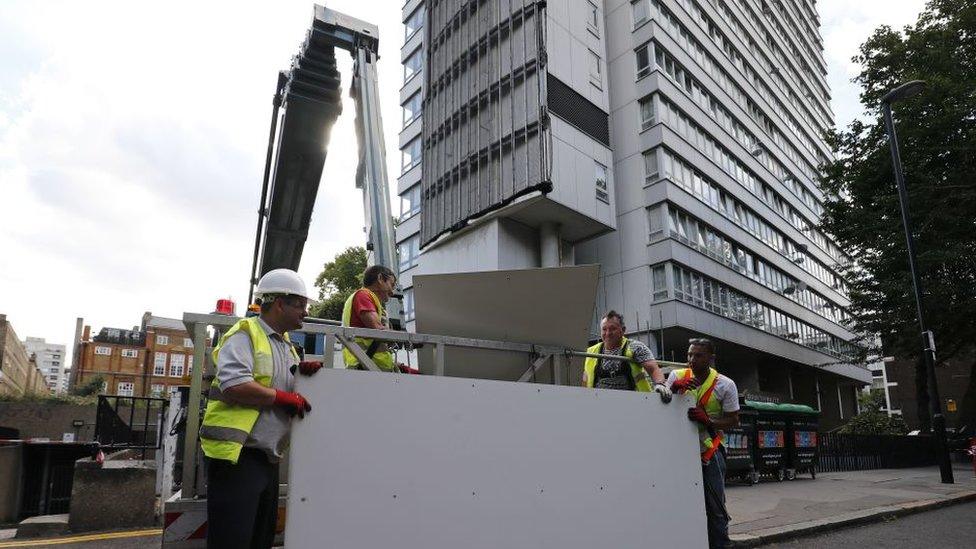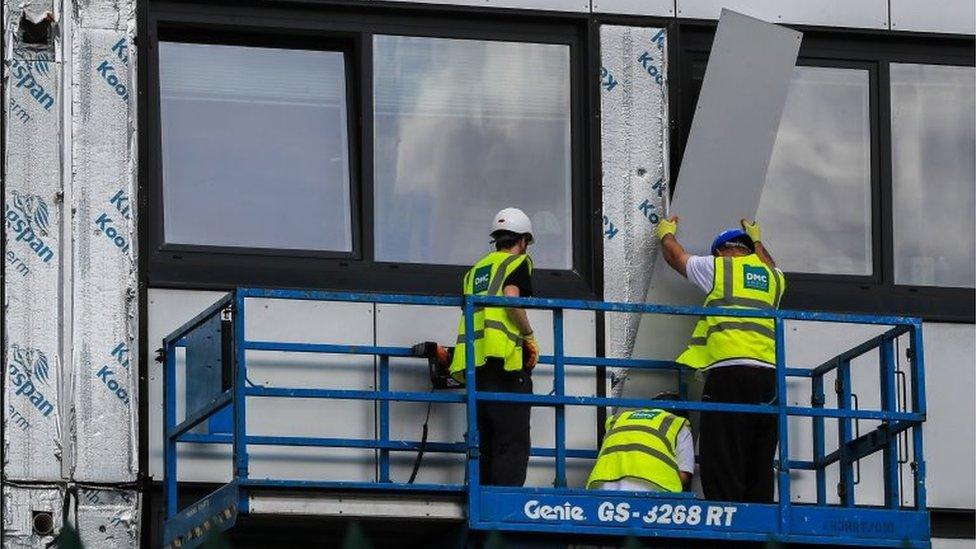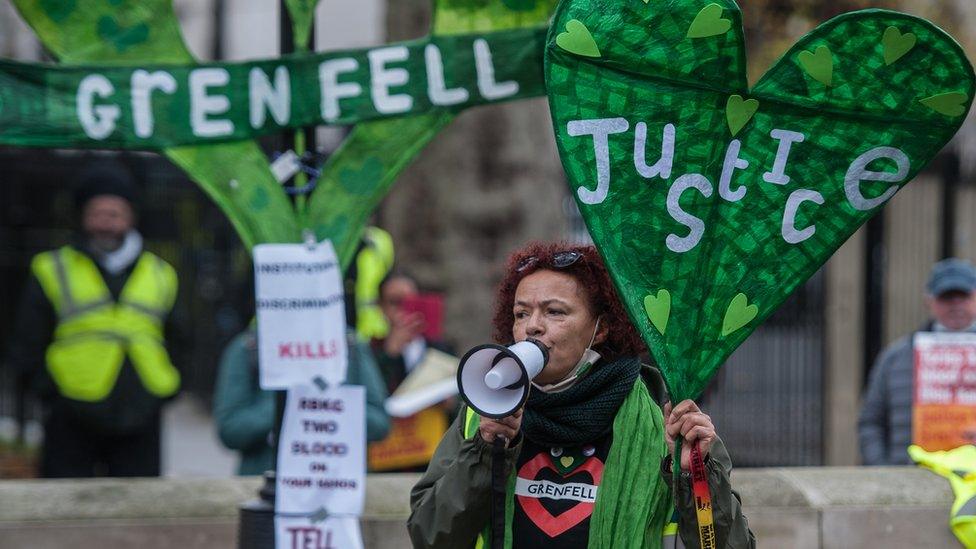Grenfell prompts creation of building safety regulator
- Published

A new regulator will be set up with the power to prosecute property developers that do not meet safety standards, the government has announced.
The new safety regime is designed to prevent any repetition of the Grenfell Tower disaster, which killed 72 people in 2017.
Housing Secretary Robert Jenrick will unveil the plans in the government's Building Safety Bill on Monday.
The new system would reassure "the vast majority" of residents, he said.
He also said the new regulator would provide "essential oversight at every stage of a building's lifecycle, from design, construction, completion to occupation".
A spokesperson for the Ministry of Housing Communities and Local Government (MHCLG) said the bill would ensure there were clearly identified people responsible for the safety of the design, build and occupation of high rise buildings.
And the bill would also give residents more routes through which to raise concerns about safety, the spokesperson said. Before the Grenfell disaster, residents said they raised the issue of fire safety in the building and were ignored.
Under the new system, property developers who fail to meet requirements could be prosecuted, and manufacturers could have their construction products taken off the market.
"The new building safety regime will be a proportionate one, ensuring those buildings requiring remediation are brought to an acceptable standard of safety swiftly, and reassuring the vast majority of residents and leaseholders in those buildings that their homes are safe," Mr Jenrick said.
On Sunday, the housing secretary revealed to the BBC that he planned to use the bill to strengthen the rights of residents who wished to pursue compensation from builders for sub-standard or unsafe work.
As part of the proposals, residents will have 15 years rather than just six as previously, to pursue a claim.
After the Grenfell fire, thousands of other blocks of flats were found to be covered in similar dangerous cladding.
The government has made a £5bn fund available to remove cladding on buildings over 18 metres. But many residents have still faced huge bills for the removal of cladding and other fire safety work.
Robert Jenrick announced on Sunday that leaseholders would have 15 years to sue developers who had used "Grenfell-style" cladding
Campaigners - speaking on behalf of leaseholders facing massive bills for safety work - said the longer time frame would not solve the problem for many people, particularly if the developer responsible had gone out of business, or if the building was more than 15 years old.
Labour's shadow housing secretary Lucy Powell said people had already found the barriers to mounting legal action "too high and costly, and outcomes ineffective".
The new Bill does not ensure leaseholders will be protected from charges for remedial safety work. It only requires building owners to demonstrate they have explored alternative ways of meet remediation costs before passing them on to leaseholders.
Related topics
- Published4 July 2021

- Published29 April 2021
